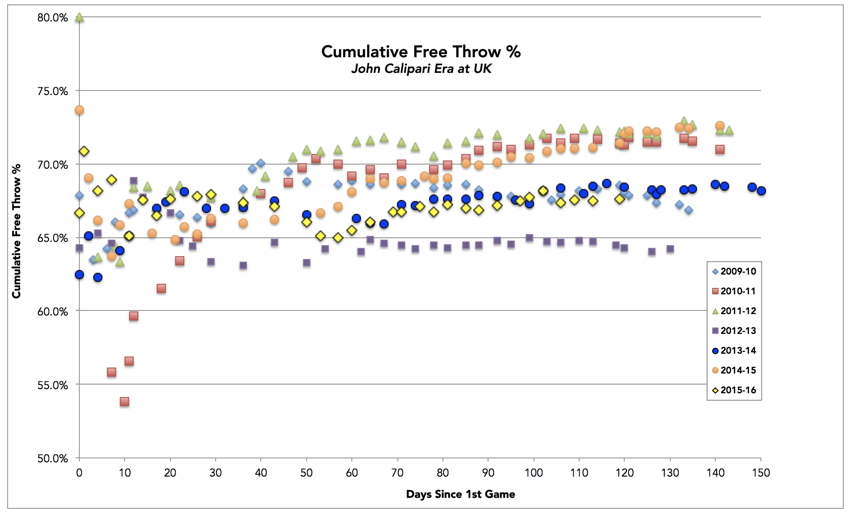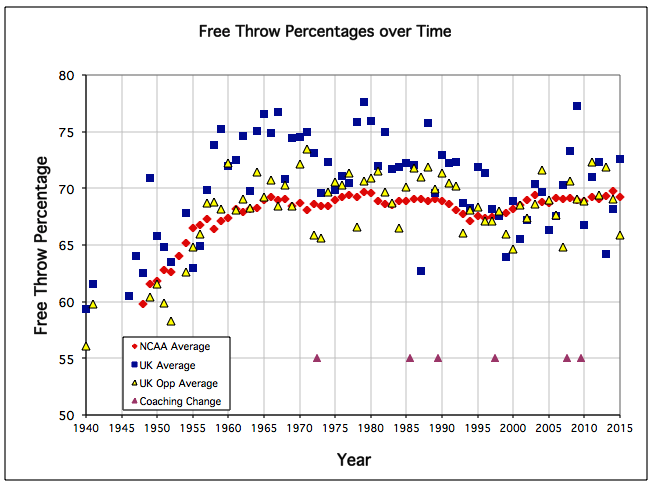UK's free throw struggles to date got me thinking, when exactly does a bad habit (poor free throw shooting) become a permanent problem. Or in other words how soon in the season does bad free throw shooting manifest itself in a foregone conclusion that the team is just a poor shooting team?
To look at that, I took the past four seasons under John Calipari and charted the cumulative free throw percentage as a function of the number of days since the first game. Remember this is cumulative, so each data point includes the free throws and attempts from all previous games that season.
The chart is below.

I think it's interesting that Calipari's two best free throw shooting teams (2010-11 and 2011-12) started out either about the same or significantly worse than the current 2013-14 team at this point in the season.
The two teams which ended up lower than the NCAA average (which is about 69%, as shown in the chart below) started out about the same to slightly better than UK's current team.
All teams improved from the early part of the season except of the 2012-13 team which pretty much hovered just below the 65% line all year.
As far as how long is took the other three teams to arrive near their final point, it took the 2009-10 team about 40 days, the 2011-12 team about 60 days and the 2010-11 team about 90 days. Of the three teams, only the 2009-10 team seemed to reach a peak and get worse near the end of the season.
Given all this, I think it's too early to panic as the MSU game was on the 4th day of the season.





 Articles by Category
Articles by Category
vBulletin Message